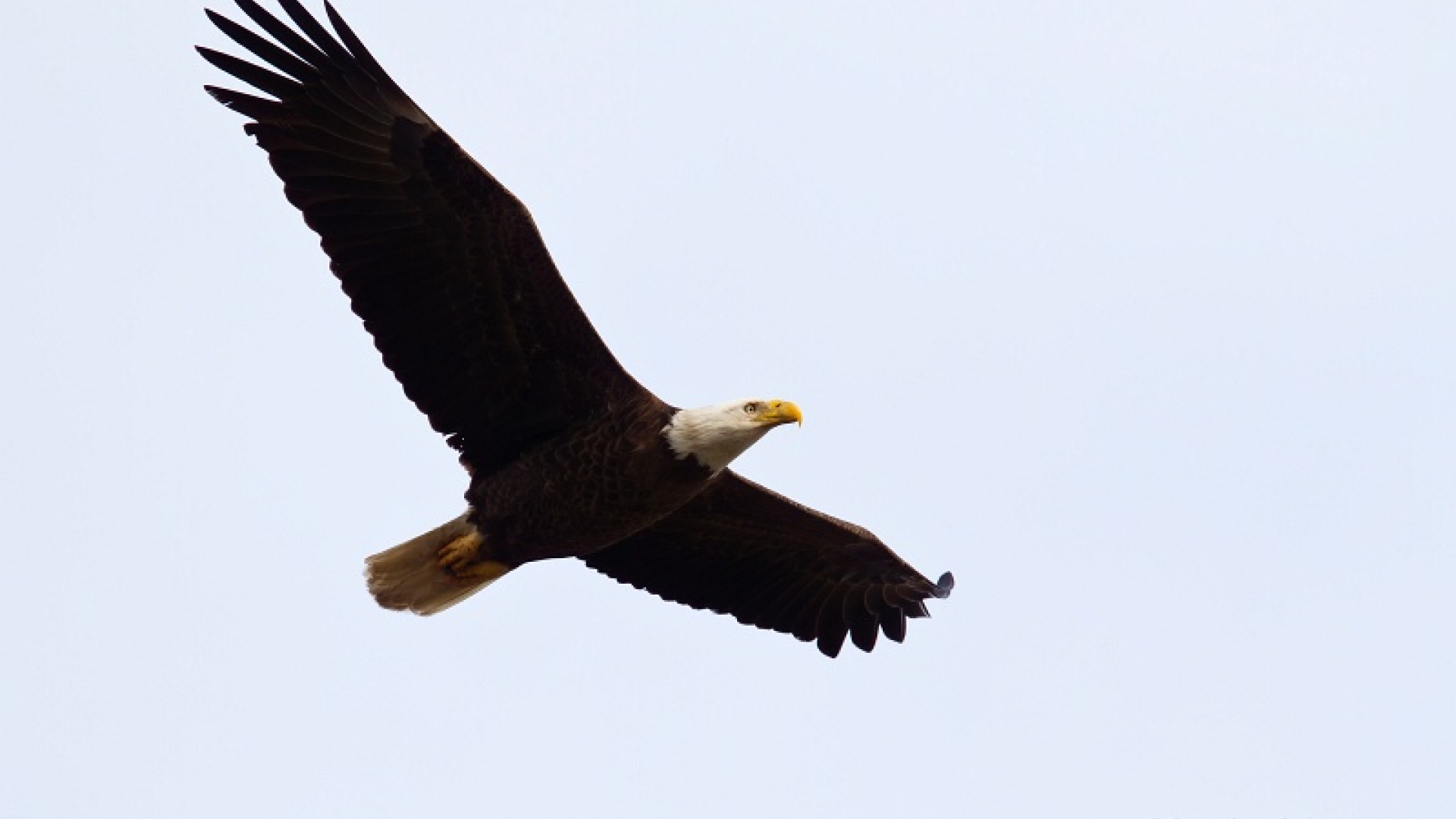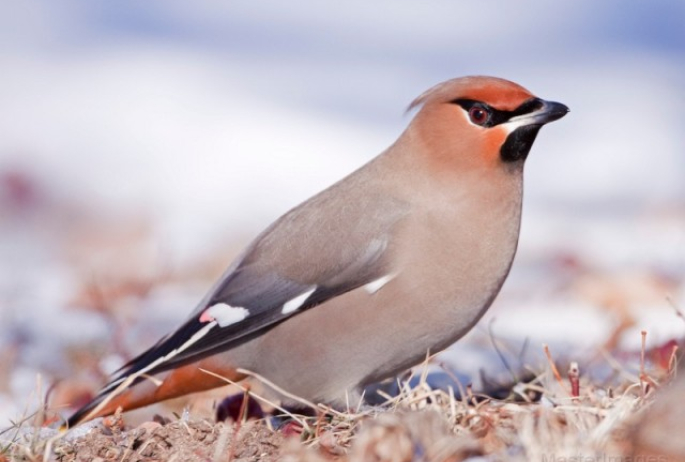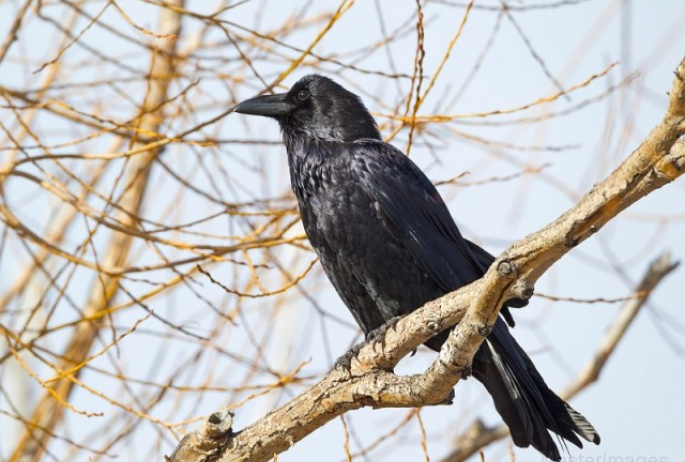Cold Weather Birding
Winter birding in Saranac Lake and the rest of the Adirondacks often revolves around finding resident boreal species – not a bad consolation for a cold walk. And so, Wren and I have been out throughout the winter to find species like Black-backed Woodpecker, Gray Jay, and Boreal Chickadee. The past month has also brought Bohemian Waxwings – a winter specialty – from the north, and a couple days ago I saw a flock of perhaps 50 feeding on the fruit trees in front of Pizza Hut in Saranac Lake.
But as the calendar advances through March and the days lengthen, winter birding begins to change subtly. It is still early for many new arrivals to come into the region – although they are coming soon – and my skis and I are happy that winter still firmly holds the region. But softening snow and ice and warmer temps often first show themselves in the birds which have remained with us all winter. Black-capped Chickadees and Northern Cardinals sing each morning as I take Wren out. White-breasted Nuthatches join them, adding their laughter song to the quiet mornings – the song my friend calls the sound of melting snow.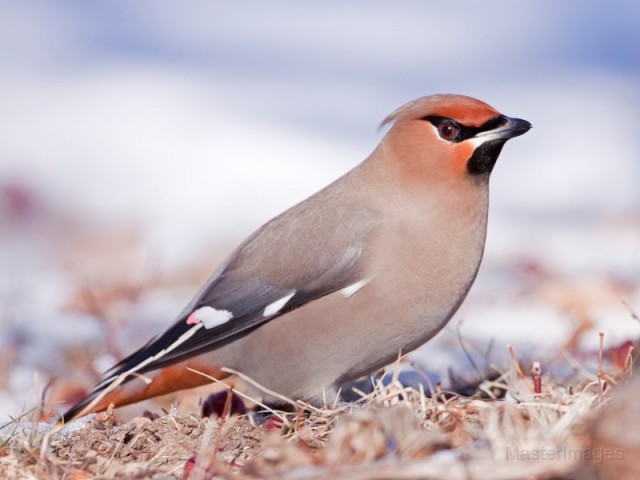
Walking at Lake Colby on a Warm Morning
This morning’s warm temperatures (thankfully without rain) brought with them a sense of spring and Wren and I were soon walking the railroad tracks along Lake Colby. Downy, Hairy, and Pileated Woodpeckers called and drummed on trees – a sign that the territoriality which accompanies nesting isn’t far behind. Black-capped Chickadees called and one of those White-breasted Nuthatches offered a laugh for the oncoming warmth. I’m not ready for winter and skiing to end (and they are certainly not finished yet!), but it is nice to hear the change in the birds around us.
Wren and I walked down along the lake and I inspected the light dusting of snow for animal tracks. A few days earlier we had seen a Mink run across the trail in front of us and I quickly found a few sets of fresh mink tracks left behind as it foraged along the wetland boundary. The lake itself was quiet – frozen solid – with a few ice fishermen taking advantage of the warm weather. A second Pileated Woodpecker called from the far side of the tracks and as we approached it we heard an odd series of calls which sounded a bit like a Wild Turkey. Unconvinced of this initial conclusion, I made a few Barred Owl calls to trigger a response from whatever was in the woods, and out popped a Common Raven.
Ravens make a lot of strange vocalizations, but the bird sat quietly searching for the unseen owl. I began to wonder if they were setting up nest along the lake which would explain the odd calls. Winter or not, ravens generally begin nesting on the early side, but this bird eventually disappeared over the rise of a hill and didn’t reveal its hand.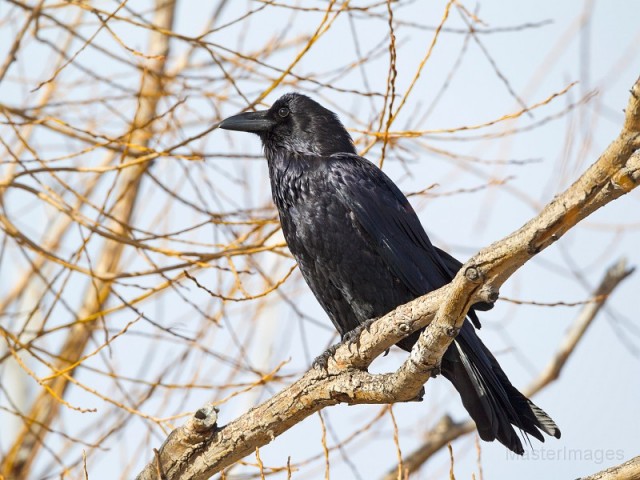
The Beginning of Nesting Activity
Wren and I moved on, finding more Mink tracks as well as those of Snowshoe Hare, but we found little else in the icy world and we eventually turned to walk back to the car. As we crossed the tracks along the lake a Bald Eagle called loudly from the vicinity of the eagle nest which sits tucked in a row of white pines. Scanning with my binoculars I found it sitting almost directly next to the nest. It is getting close to time for them to start thinking about nesting too. As I stood there I heard the odd series of calls again which I had heard earlier on the walk and I turned to watch a Common Raven fly over the bog mat calling as it carried a beak full of nesting material towards the woods. Clearly they are planning to nest in the neighborhood. As I followed the raven with my binoculars I happened upon a second Bald Eagle sitting in the trees across the lake. I don’t know if it was potentially paired with the eagle near the nest, but there is always the chance.
Wren and I completed our walk with a drumming Pileated Woodpecker and a calling Brown Creeper. The list of species may not be as long as it will be in May, but subtle changes of spring mark this time of year as winter loosens its grip on the landscape little by little.
With spring and summer coming, birders may want to plan a trip to the region and can look for lodging and dining options as they do so.
